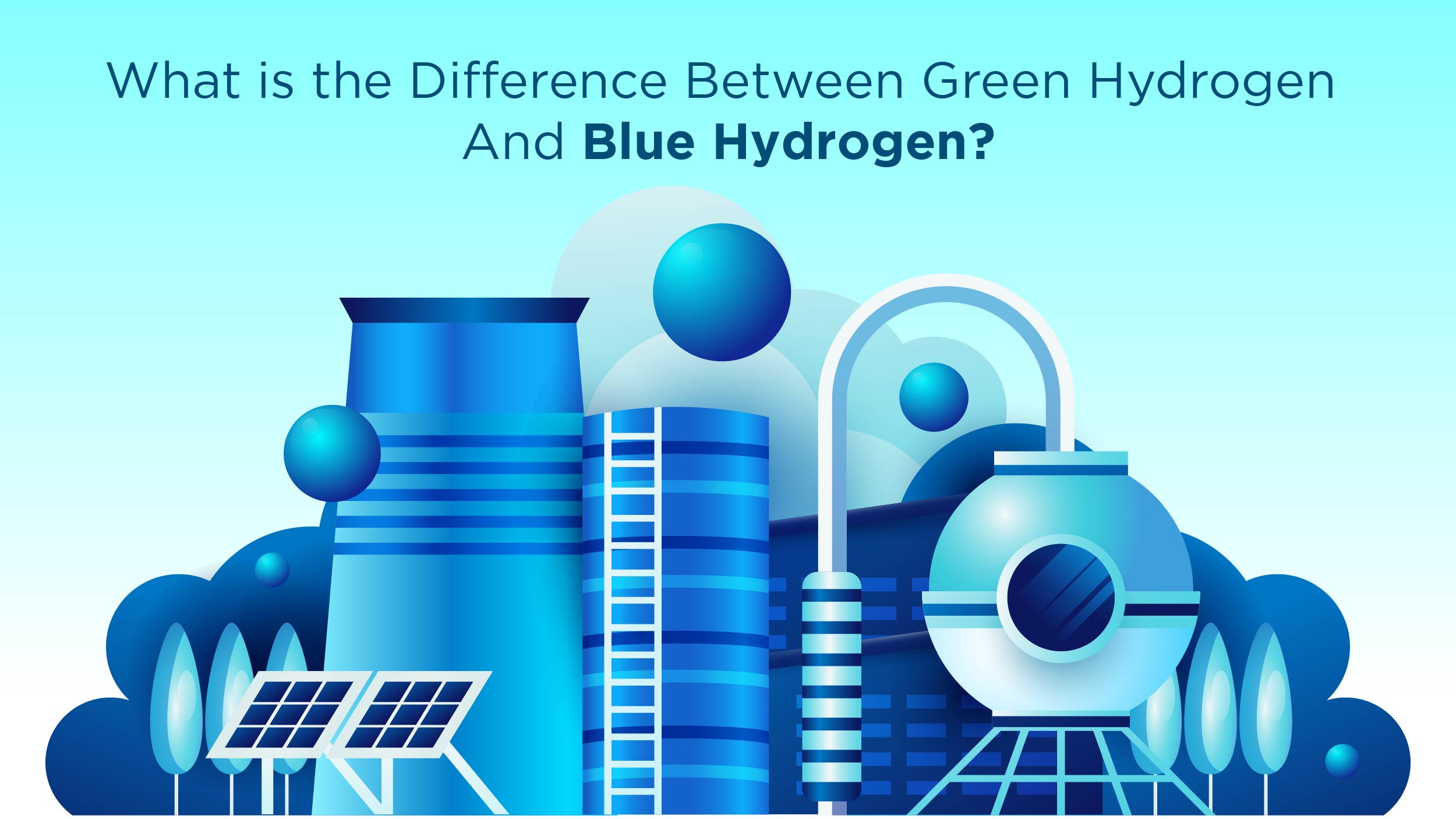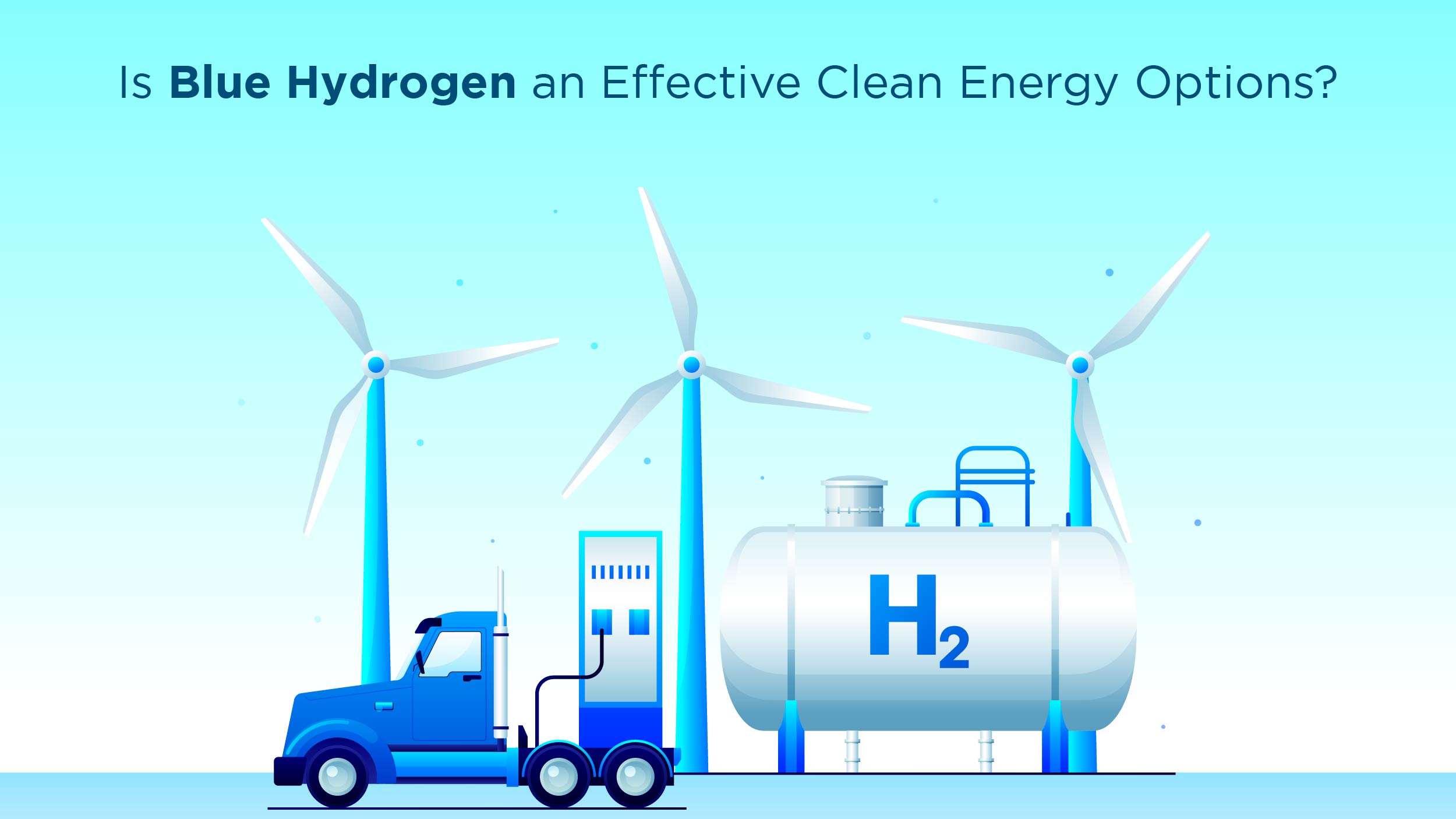Hydrogen is not a new word for us. We’ve been hearing about it since 4th grade in chemistry class. But what is this blue hydrogen? And why is it tied to controversies?
Blue hydrogen is a sustainable form of hydrogen, and no, it’s not blue in color. The different types of hydrogen, such as blue, green, and gray, are used as a way to differentiate between the methods of production and the environmental impact of the hydrogen. This article discusses everything you need to know about this novel molecule.
What is Blue Hydrogen?
Blue hydrogen is derived from natural gas through steam methane reforming (SMR) or autothermal reforming (ATR). It involves mixing natural gas with steam and a catalyst to initiate a reaction, yielding hydrogen and carbon monoxide. Subsequently, water is introduced to convert carbon monoxide to carbon dioxide, while producing additional hydrogen. When the carbon dioxide emissions are captured and stored underground, the resultant hydrogen is termed “blue hydrogen.”
In the future, it might prove to be the most affordable solution for decarbonizing heavy-duty cars, industrial heating, and homes in severely cold locations.
However, there is some debate about it because the drilling, extraction, and transportation of natural gas inevitably cause methane leaks, which result in methane emissions. This process generates greenhouse gas emissions, being controversial to why it was conceptualized in the first place.
What is the Difference Between Green Hydrogen And Blue Hydrogen?

Green hydrogen and blue hydrogen are two distinct methods of hydrogen production. Green hydrogen is produced through electrolysis using renewable energy sources, resulting in a carbon-free process. On the other hand, blue hydrogen is generated from natural gas, but incorporates carbon capture and storage (CCS) technology to reduce carbon emissions. While green hydrogen is considered cleaner and more sustainable, the latter offers a transitional solution by utilizing existing natural gas infrastructure. The choice between green and blue forms of hydrogen depends on factors such as the availability of renewable energy, cost considerations, and specific industry needs. Both methods play a role in the energy transition, but ongoing research is needed to assess their environmental impact and long-term viability.
Also Read: Carbon Management: Importance, Examples, and Key Strategies
How Is Blue Hydrogen Produced?
Blue hydrogen is primarily derived from natural gas through steam methane reforming (SMR) or autothermal reforming (ATR) processes, which involve capturing and storing carbon dioxide (CO2) emissions. During these processes, steam is utilized to convert natural gas into hydrogen, while the resulting CO2 emissions are captured for recycling or underground storage.
The production of this form of hydrogen follows a series of steps:
- Natural Gas Extraction: The process begins with the extraction of natural gas from underground deposits.
- Reforming: The extracted natural gas undergoes either steam methane reforming (SMR) or autothermal reforming (ATR). In SMR, natural gas and steam react with a catalyst to produce hydrogen gas, carbon monoxide, and carbon dioxide. ATR is similar, but it involves using oxygen instead of steam.
- Carbon Capture: During reforming, the generated carbon dioxide is captured and stored for future utilization or underground sequestration. Various methods such as amine absorption or pressure swing adsorption are employed to extract CO2. In some cases, captured CO2 can be sold or utilized for enhanced oil recovery.
- Purification: The hydrogen gas produced during reforming undergoes purification to remove contaminants such as carbon monoxide.
- Distribution: The compressed and purified hydrogen is then distributed to end-users, including industrial facilities, fuel cell vehicles, or power plants, through high-pressure pipelines.
Is Blue Hydrogen an Effective Clean Energy Options?

The effectiveness of blue hydrogen as a clean energy option is a subject of debate and ongoing research. This is because it is produced from natural gas using carbon capture and storage (CCS) technology to reduce carbon emissions. However, there are differing opinions on its environmental impact.
Some argue that it can be a transitional solution, utilizing existing natural gas infrastructure while reducing carbon emissions compared to traditional gray hydrogen production. It can help industries decarbonize and reduce their carbon footprint. Proponents believe that with advancements in CCS technology and the use of renewable energy in the production process, this type of hydrogen can play a role in the energy transition.
However, critics raise concerns about its overall carbon footprint. Research suggests that the carbon emissions associated with this hydrogen production can be higher than using natural gas or coal directly for heat. The process of converting methane requires a significant amount of energy and can result in emissions that are greater than those from burning fossil fuels directly.
What Are the Applications of Blue Hydrogen Across Various Industries?
Positioned as a versatile and transformative energy solution, it finds widespread use across multiple sectors. Serving as a means to decarbonize industries reliant on fossil fuels, it powers fuel cells in electric vehicles and provides reliable backup energy.
Other application includes:
- Energy Production: Employed in fuel cells to power buildings, commercial establishments, and vehicles.
- Industrial Processes: Serves as a feedstock for producing compounds like ammonia and methanol, as well as refining petroleum-based products.
- Transportation: Fuels ships, trains, planes, and fuel cell cars.
- Heating: Used to heat residences and other structures.
As a storable and on-demand energy source, this hydrogen plays a pivotal role in various sectors without needing further mention.
Bottom Line
The answer to whether blue hydrogen is sustainable or not has a long way to go. For now, it is used in the application of various industries but in limited capacity compared to other forms of energy. While its potential is recognized, widespread adoption and implementation are still in progress. This may be attributed to concerns regarding high carbon emissions, necessitating further research and mitigation efforts.




